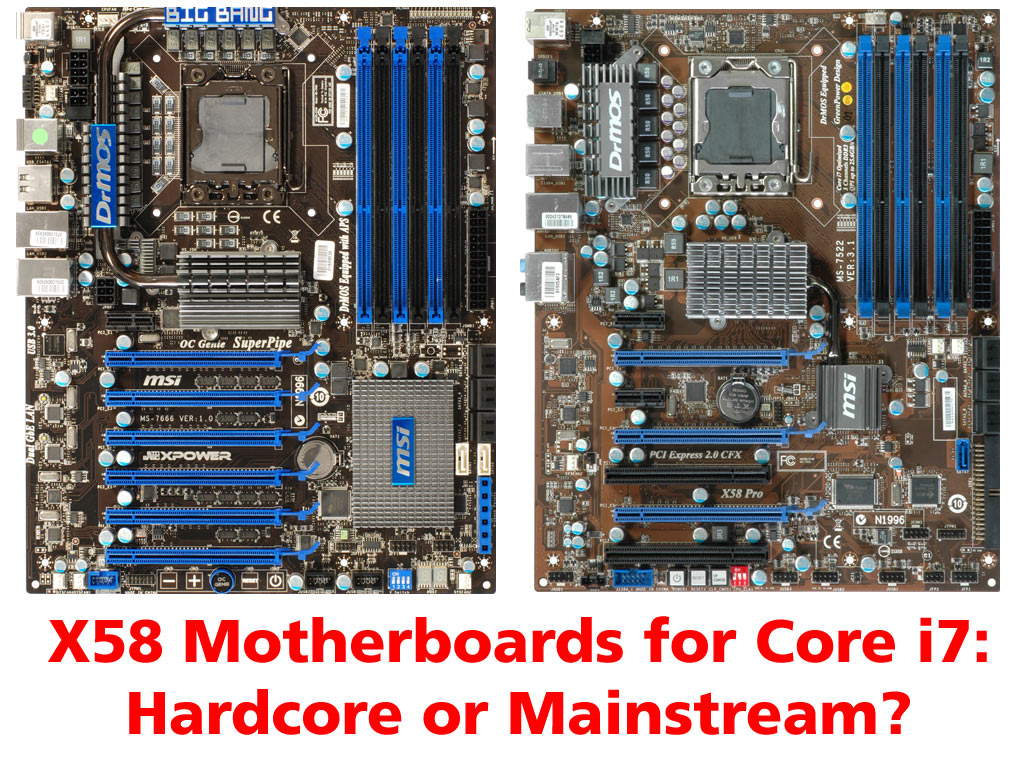Mainstream Or Hardcore? Two X58 Motherboards Compared
You need Intel’s LGA 1366 interface and an X58-based platform in order to run the latest six-core processors, but which board should you pick? We're comparing a mainstream and flagship platform from the same company to explore the worth of high-end X58.
Purchasing A Motherboard Isn’t Always Easy
There are dozens of very similar motherboard products available for each processor interface, and the industry has blanketed the market with offerings to cover all possible segments from entry-level to uber-enthusiast and all niches in between. However, too many options can sometimes breed confusion and questions about true value. Does it make sense to spend money on a top-end enthusiast motherboard, or can most of the benefits be had for a fraction of the cost? We decided to compare MSI’s BigBang Xpower against the X58 Pro-E to find out.

The LGA 1366 platform, required for Intel’s fastest Core i7 quad- and hexa-core processors, is a costly affair. “Entry-level” X58 motherboards start at roughly $160. The majority of X58 products land above $200, and it’s easily possible to spend $400 on a premium X58 motherboard if you go for a Gigabyte X58-UD7 or UD9, Asus P6T7 SuperComputer, EVGA X58 Classified, or the BigBang Xpower from MSI.
Does it make sense to spend several hundred dollars just on the motherboard? Many people purchase an entire PC for this amount of money. Enthusiasts with deep pockets can leap first and look later since these motherboards offer tremendous overclocking capabilities and typically ship with a plethora of useful add-ons and features.
Performance-wise, though, don’t expect substantial differences beyond less-costly offerings, as the X58 chipset has little impact on overall performance. In the end, processor clock rate and core count have the largest influence on computing performance, followed by memory configuration. Since the memory controller is now part of the CPU, that's one less motherboard-based subsystem able to set platforms apart from each other. Unless (you guessed it) we dive into serious overclocking.
Let’s put the X58 Pro-E, MSI’s starter X58 offering, against the new BigBang Xpower.
Stay On the Cutting Edge: Get the Tom's Hardware Newsletter
Get Tom's Hardware's best news and in-depth reviews, straight to your inbox.
Current page: Purchasing A Motherboard Isn’t Always Easy
Next Page Mainstream: MSI X58 Pro-E